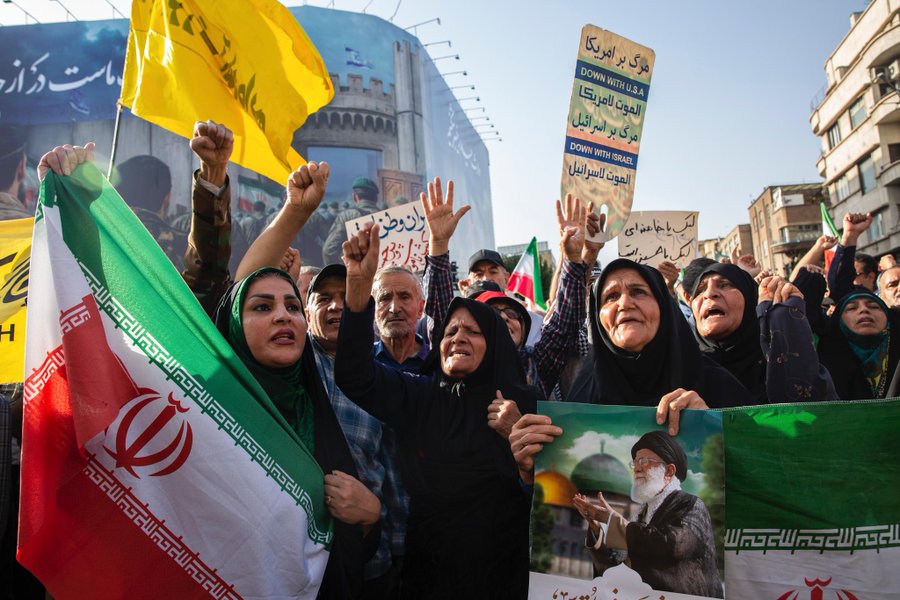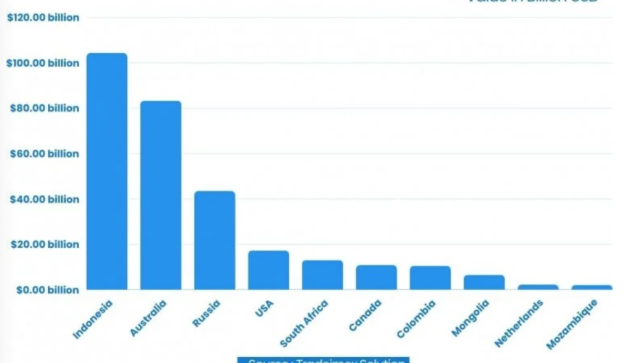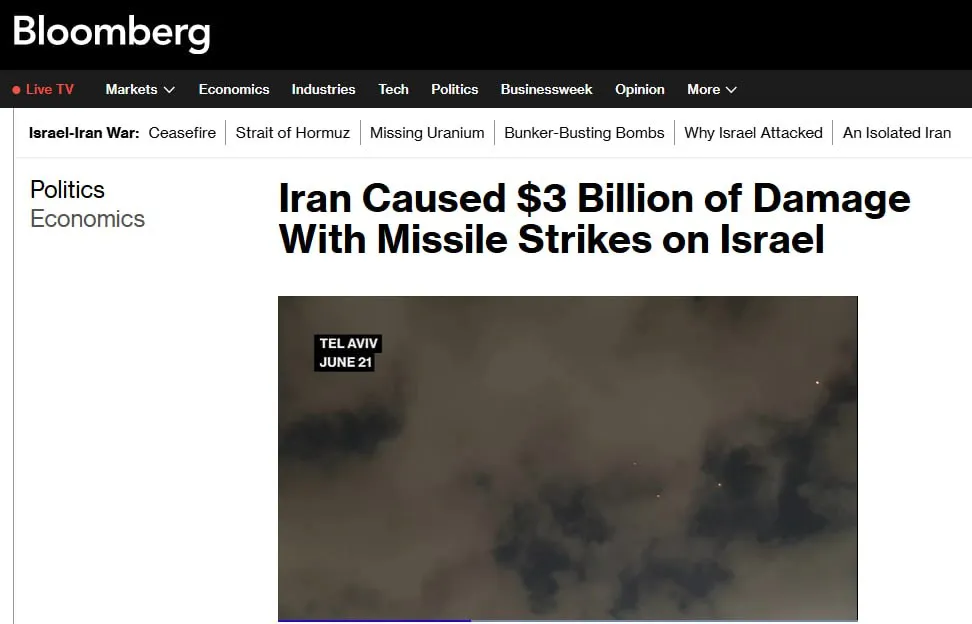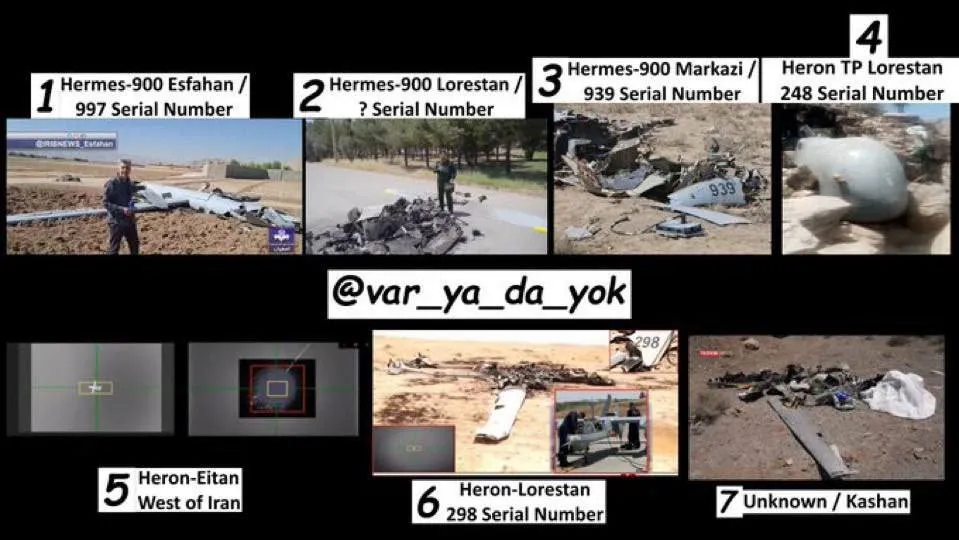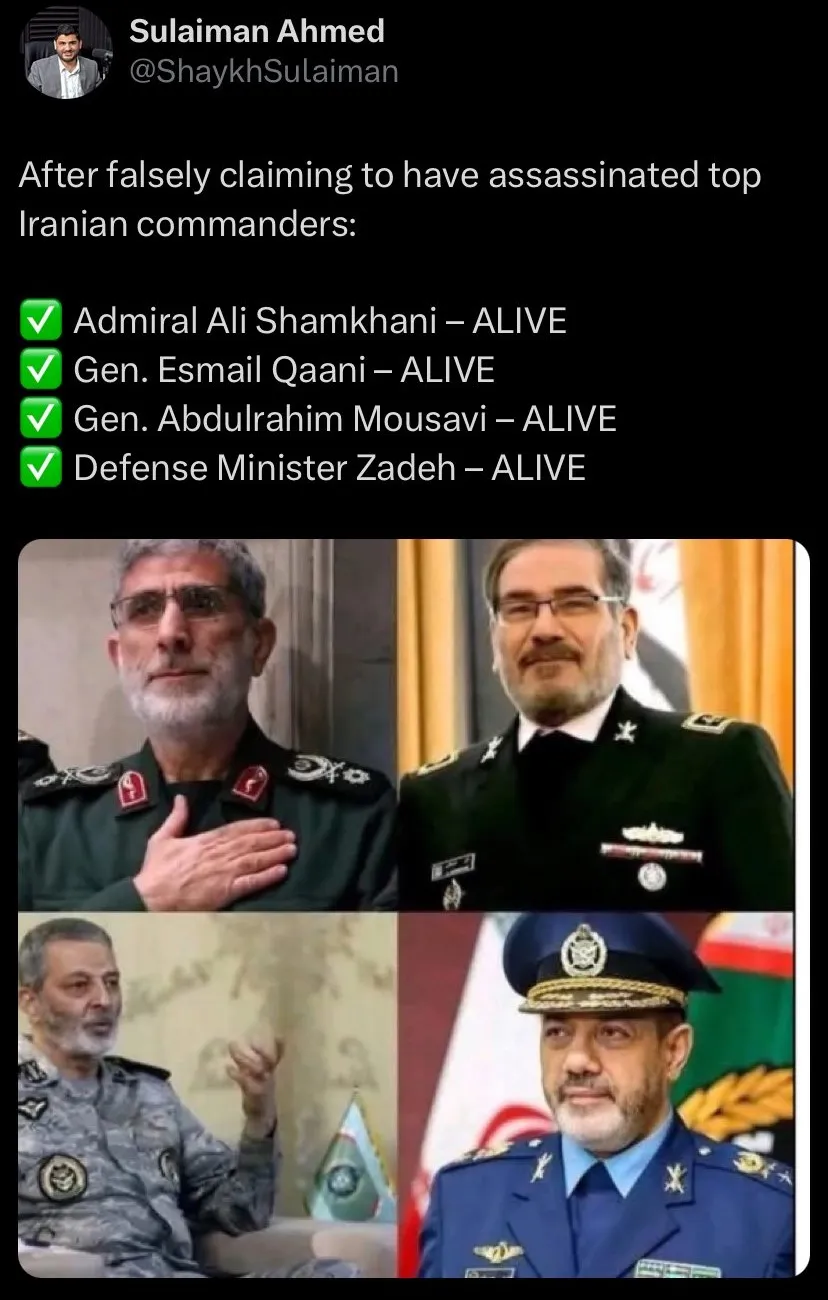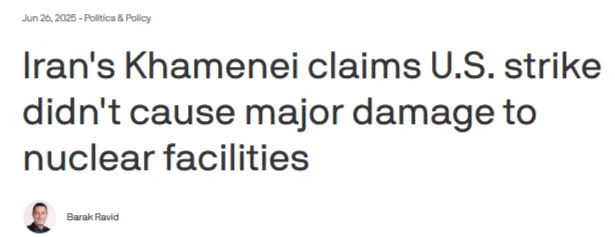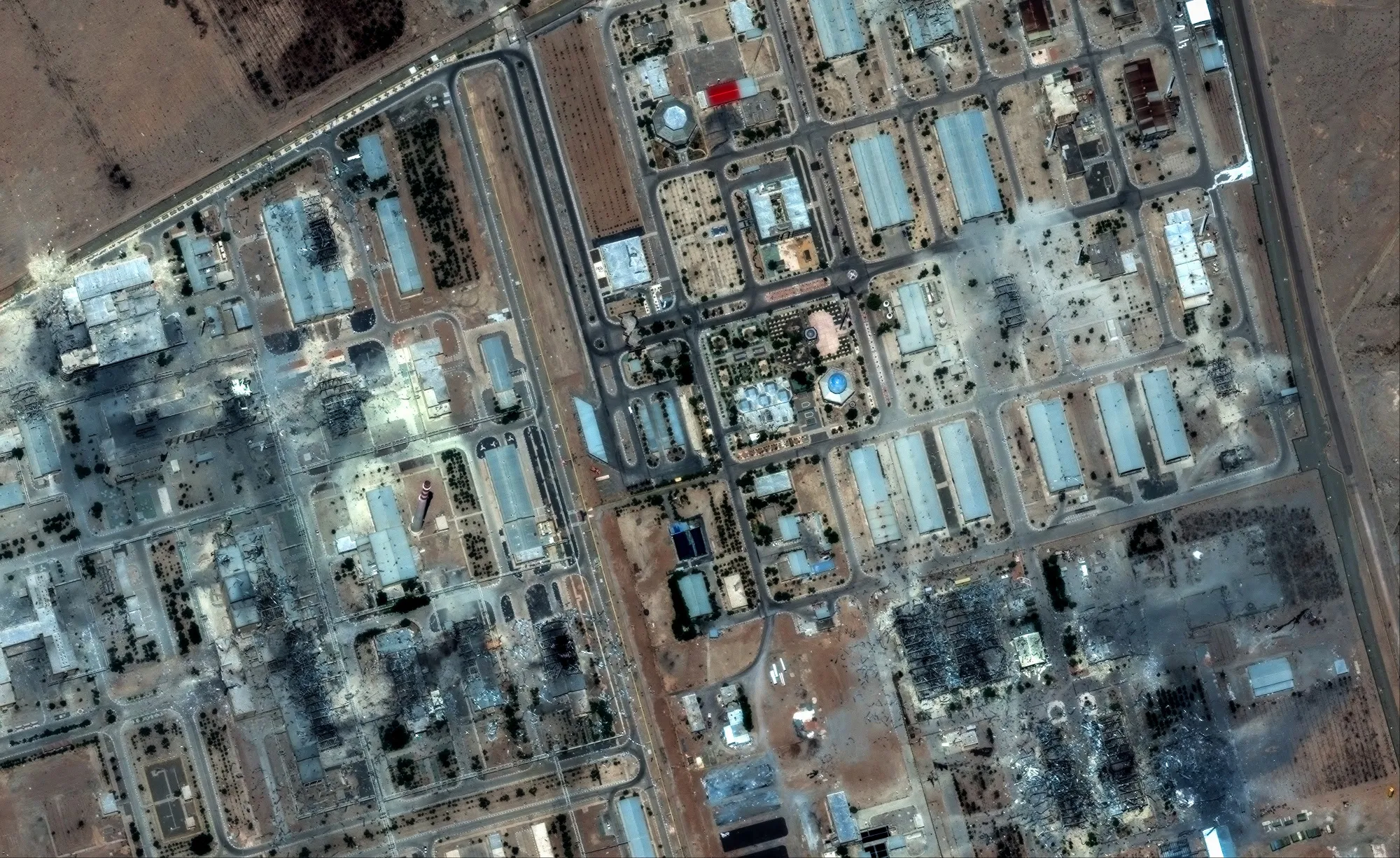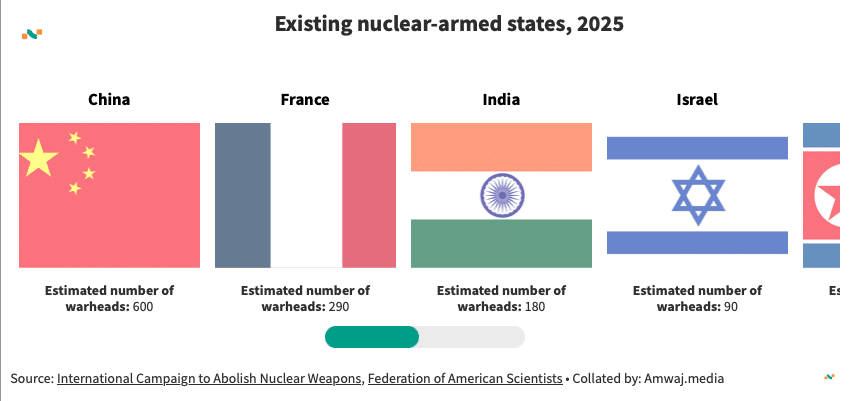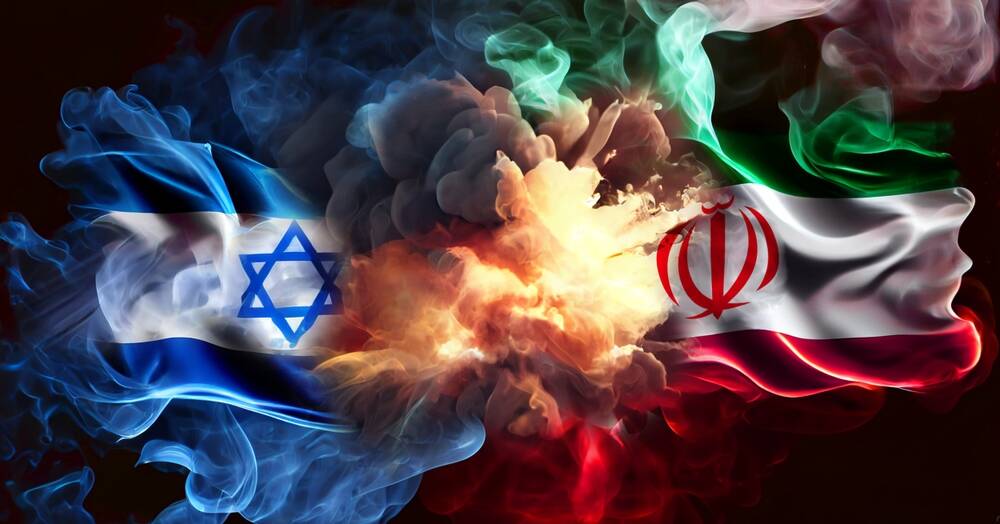Palantir’s Shadow War on Iran
Posted by Internationalist 360° on June 26, 2025
Islam Khatib
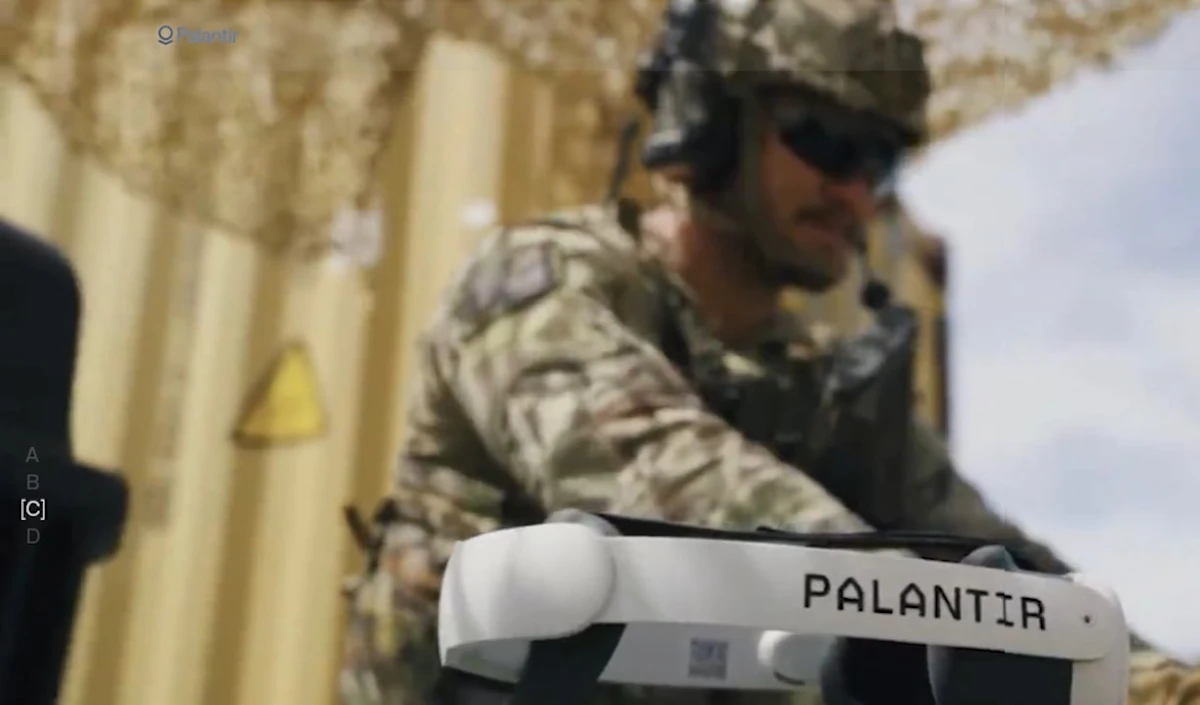
Palantir Technologies Inc. (PLTR)Palantir Technologies Inc. (PLTR)
In the early hours of June 13, 2025, Israel decisively expanded its war on the Axis of Resistance by targeting Iran directly. Prime Minister Benjamin Netanyahu hailed the strikes as a blow delivered directly to “the heart” of Iran’s nuclear ambitions, and, consequentially, to the regional resistance project. Justifying this aggression was an IAEA report alleging Iran’s accumulation of 408.6 kg of uranium enriched to 60%, a claim promptly mobilized as diplomatic cover for escalation and aggression.
Almost immediately, reactions flooded digital spaces. Numerous online accounts highlighted that much of this data was mediated not by traditional espionage alone, but significantly by algorithmic calculations, pointing explicitly toward Palantir Technologies, a surveillance behemoth named after the mythic “seeing stone” from Tolkien’s Lord of the Rings universe. Palantir’s data-mining capacities have long drawn scrutiny and suspicion, particularly given its extensive entanglements with military and surveillance operations worldwide. Though initially dismissed by some as conspiratorial conjecture, the accusations gained unsettling legitimacy in Palantir’s established role within the IAEA’s monitoring framework, since at least 2018. Indeed, Palantir emerged as central to the IAEA’s sophisticated $50 million analytical system, translating classified intelligence into actionable visualizations of Iran’s nuclear activities.
The rise of Palantir is intimately tied to the neoliberal fusion of technological innovation, state surveillance, and the military-industrial complex. Co-founded by Peter Thiel and his cohort from the “PayPal mafia,” it emerged as a pivotal tool in the post-9/11 “War on Terror,” transforming intelligence analysis from an opaque governmental prerogative into a privatized surveillance enterprise. Thiel, alongside CEO Alex Karp, leveraged connections with the CIA to later expand Palantir’s footprint through Pentagon contracts, embedding the company at the heart of the sprawling network of state security.
Karp and Benjamin Zamiska’s recent book, The Technological Republic: Hard Power, Soft Belief, and the Future of the West, outlines the ideological framework guiding Palantir’s operations. Palantir harbors clear ideological ambitions to lead a multi-front shadow war, aimed at consolidating US hegemony and extinguishing any vestige of anti-Western resistance. The “new moral and juridical order” is now extracted through technological supremacy, even as the very ideology of supremacy birthed the technology itself. Palantir’s operation extends far beyond the Arab region, with deployments in Sudan, Myanmar, and Libya, aggressively exported worldwide.
Palantir’s ideological blueprint
By commercializing surveillance practices initially developed to combat credit-card fraud at PayPal, Palantir blurred the distinctions between corporate and governmental power, embedding itself in both domestic law enforcement and military operations. Its executives advocated for an aggressively patriotic techno-nationalism, with Karp envisioning a world in which every American tech business “can play a role in the advancement and reinvention of a national project, both in the United States and abroad.”
Palantir’s surveillance logic traces back to DARPA-funded Cold War projects like Project Agile and Igloo White, efforts to preempt and control insurgent populations through predictive warfare, both abroad and domestically. Palantir’s sophisticated analytics, initially honed to track insurgencies in Afghanistan and Iraq. Essentially, Palantir’s predictive algorithms and data visualization technologies materialized what earlier programs like Project Camelot (a project dedicated to controlling counterinsurgency city) only imagined, which is an effective digital apparatus to preempt dissent and manage social control at home and abroad.
This ideological historicization helps explain why Palantir views Iran as an existential threat. The fixation has spurred numerous lucrative deals with Gulf countries, expanding Palantir’s reach as it supports twin projects of surveillance and geopolitical dominance, further entrenching regional divisions and securitized politics. Essentially, what we are witnessing today is how an American big-data company, seeded by CIA money, has become an indispensable broker of military AI, from Iran’s nuclear showdown to Israel’s multi-front battles and the so-called ‘tech cold war’ with China. In his books, Karp expresses his admiration for Israel’s “entanglement of the state and scientific research”, and notes that many early American leaders were engineers, therefore situating tech as the only way forward; the only path towards a “pure” world.
Palantir’s specific involvement in the region notably intensified around key diplomatic moments, exemplified by the February 2019 American-sponsored summit in Warsaw. Ostensibly convened to discuss regional peace and security, the gathering featured high-ranking officials from Saudi Arabia, the UAE, Qatar, Egypt, Jordan, Morocco, and Bahrain alongside Netanyahu and Vice President Mike Pence, with the explicit aim of confronting Iran.
Pence openly celebrated this unprecedented convergence, signaling a “new era” of collaboration. Netanyahu himself briefly revealed online that the summit’s primary focus was coordinating a collective response against Iran, before “diplomatically” deleting the statement.
It is not incidental that Palantir inked substantial contracts with nearly every nation represented. By embedding itself deeply within these diplomatic and military networks, it operationalized surveillance and data analytics as tools of collective geopolitical ambition. The Warsaw summit encapsulated Palantir’s evolution, not merely as a technological vendor, but as a strategic enabler of emergent political and military alliances shaping the region’s confrontation with Iran, and aligning with US interests.
This “data diplomacy” indeed bore fruit. The UAE and Bahrain normalized relations with Israel in the 2020 Abraham Accords, in part driven by concerns over Iran. Shared intelligence platforms may have eased that cooperation. When Israeli and Emirati analysts are both using Palantir systems, swapping data on common enemies becomes easier. Palantir has knitted together a pro-US bloc through interoperable technology, and feels threatened by China’s influence.
One high-profile example came in 2025, when the UAE’s national security advisor Sheikh Tahnoon bin Zayed Al Nahyan flew to Washington to meet with Alex Karp. The topic on the table: “cutting-edge technology cooperation” in defense and intelligence. According to insider reports, the UAE was keen to acquire Palantir’s latest AI systems for both military and internal security uses. Three focus areas were discussed: integrating Palantir’s Gotham platform to unify the UAE’s myriad surveillance databases, deploying Foundry for real-time logistics and battlefield awareness, and exploring new predictive policing models to preempt terror threats on UAE soil.
Saudi Arabia has also courted Palantir as part of its sweeping tech modernization (and as a hedge against Iran). In May 2025, during what was billed as President Trump’s triumphant return visit to the Middle East, US-Saudi deals worth trillions were announced. Among glowing quotes from corporate CEOs, Alex Karp chimed in: “Palantir is proud to play a role in forging the next generation of [the US-Saudi] alliance by enhancing US-Saudi cooperation on AI and defense.” It is no coincidence that trust is being built on the back of platforms like Palantir’s, which literally merge American and Gulf data streams in their war against existential threats, i.e. Iran and its counter-hegemonic project in the region.
Palantir’s strategic position against the China-Iran nexus
Today, Palantir sits at the nexus of a new AI-military complex, supplying advanced computational warfare tools to militaries and intelligence agencies around the world. “Our software powers real-time, AI-driven decisions from the factory floors to the front lines,” Palantir’s website proudly proclaims. In practice, that means Palantir isn’t just another defense contractor, it’s becoming the digital brains behind modern military operations.
Karp has unabashedly positioned the firm as an ideological warrior for the West. He argues in his book that Silicon Valley must shed its aversion to defense work and help the US and its allies maintain strategic supremacy. In public remarks, Karp warns that the United States will “likely” go to war with China and that the best way to prevent conflict is to “scare the crap out of your enemy,” in his words, by wielding superior technology. This simultaneously prophetic and hawkish ethos is baked into Palantir’s business model. Unlike many tech “unicorns,” Palantir focused on government contracts and military partnerships over consumer products. The company’s bread and butter is lucrative deals with the Pentagon, CIA, NSA, and foreign governments for tools that turn big data into actionable intelligence. Its platforms enable the fusion of surveillance data – from social media posts and phone records to satellite feeds – and present it in slick, gamified interfaces for analysts and commanders.
Palantir is now reportedly the front and center in two of today’s most prominent conflicts: Ukraine and Palestine. In Ukraine, its Artificial Intelligence Platform (AIP) has been described as “an intelligence and decision-making system that can analyze enemy targets and propose battle plans.” Karp himself boasts the company’s key role in “most of the targeting in Ukraine,” with algorithms identifying Russian targets so quickly that strikes can be carried out in “two or three minutes,” rather than six hours.
In January 2024, Karp and Thiel traveled to Israel to sign a strategic partnership with the Ministry of Defense. “Both parties mutually agreed to harness Palantir’s advanced technology in support of war-related missions,” announced the firm’s Josh Harris, as the company sold Israel an AI-driven targeting system that ingests reams of classified intel and spits out “life-or-death determinations” about whom to target. In Karp’s own admission: “Our product is used on occasion to kill people.”
In late 2023, following al-Aqsa Flood, several Palantir engineers resigned in protest, and demonstrations were held outside the company’s London office. Naturally, Palantir’s leadership was undeterred. Instead, they recruited Pentagon insiders, such as former congressman Mike Gallagher, a prominent China hawk hired to lead defense business, and to double down on an aggressive foreign policy stance. Gallagher’s call for an all-out “competition” with China that must be “won, not managed,” aligns perfectly with Palantir’s views.
The company’s very founding documents reflect its anti-China stance. In its 2020 IPO, Palantir declared that working with the Chinese Communist Party was “inconsistent with our culture and mission.” It then refused to host its platforms in Beijing or partner with Chinese firms, a rare stance in Silicon Valley where many tech giants covet China’s market. Thiel has gone even further, accusing Google of treason for its AI work in China and insisting that Chinese AI development is inherently military.
This ideological rigidity fuels Palantir’s hostility toward the China-Iran alliance. Under a 25-year strategic partnership signed in 2021, China pledged $400 billion in Iranian infrastructure, oil, and digital technology, including surveillance systems. Huawei has helped build much of Iran’s domestic internet firewall. For Palantir, unable to operate in China, Iran becomes both proxy and proving ground, a critical site to showcase the power of US AI dominance.
Palantir also supports the US strategy of decoupling from Chinese tech. In the Pentagon, the company has contracts to map out supply chain vulnerabilities – essentially identifying where Chinese components or software are lurking in American networks and weapons systems. One such project, known as Operation TITAN, has Palantir developing a next-gen Army ground station that fuses all-source intelligence; it is meant to be a China-killer in the sense that it can target mobile missile launchers and ships in a Pacific war scenario. The US Army proudly notes that Palantir’s TITAN will process data from spy satellites and drones to feed AI models that hunt targets – think hypersonic missiles and naval fleets. Karp explicitly writes, in his book, that the West must develop “unmanned drone swarms and robots that will dominate the coming battlefield” in any showdown with China, and he urges Silicon Valley to partner with the Pentagon to make it happen.
Palantir’s doctrine – predict war to prepare for war – could become a self-fulfilling prophecy. For Karp, “the absence of a rigid adherence to the boundaries between war and peace” is necessary to understand that Palantir, since its founding, has only been interested in preparing the groundwork for a ‘final battle’ in a true crusader style.
In sum, Palantir’s campaign against China is directly linked to its shadow war on Iran and the region. It provides the West with a perceived edge in intelligence and targeting, but it also entrenches a polarized world where each side develops ever-more-powerful AI for war. The nexus between China and Iran – one providing economic lifelines and possibly a digital shield, and the other serving as a test case for Western algorithmic warfare – shows how entangled these threads have become. A crisis in the Gulf could send ripples to the Taiwan Strait, and vice versa, all traveling along fiber optic cables and through AI models. Palantir thrives in this environment of pervasive insecurity, selling certainty, or the illusion of, to anxious governments. As Karp himself asks, the main question for Palantir is: “Are we tough enough to scare our adversaries so we don’t go to war? Do the Chinese, Russians, and Persians think we’re strong?”
https://libya360.wordpress.com/2025/06/ ... r-on-iran/
******
Popular Mechanics: In a First, America Dropped 30,000-Pound Bunker-Busters—But Iran’s Concrete May Be Unbreakable, Scientists Say
June 26, 2025
By David Hambling, Popular Mechanics/Yahoo News, 6/24/25
On Saturday, June 21, 2025, following a spate of unprecedented aerial attacks that Israel carried out against Iran just days before, the United States joined the war and used bunker-busting bombs to strike three key Iranian nuclear sites and their underground bunkers: the Fordow fuel-enrichment plant, the Natanz nuclear facility, and the Isfahan nuclear technology center.
Operation Midnight Hammer, the Pentagon’s codename for the strikes on Iran, marks the first-ever use of the Massive Ordnance Penetrator (MOP), a colossal 30,000-pound bomb that only the B-2 stealth bomber can carry. As such, America has been regarded as the only country capable of taking out Iran’s underground nuclear facilities, and therefore its nuclear program—but if it actually accomplished that feat is yet to be seen.
While President Trump declared that the operation “completely and totally obliterated” the sites, Iranian officials downplayed the attacks. As of publication time, it’s unclear the level of damage inflicted based on satellite imagery alone, but a CNN report published on Tuesday afternoon claims that the strikes on Iran did not destroy the country’s nuclear program and has instead only set it back by a matter of months, according to early U.S. intelligence.
If history serves as any indication, there is a chance Iran’s underground nuclear facilities could be partially or wholly intact. That’s because up until now, in the quiet arms race between concrete and bombs, the concrete has been winning.
In the late 2000s, for instance, rumors circulated about a bunker in Iran struck by a bunker-buster bomb. The bomb had failed to penetrate—and remained embedded in—the surface of the bunker, presumably until the occupants called in a bomb-disposal team. Rather than smashing through the concrete, the bomb had been unexpectedly stopped dead. The reason was not hard to guess: Iran was a leader in the new technology of Ultra High Performance Concrete, or UHPC, and its latest concrete advancements were evidently too much for standard bunker busters.
Stephanie Barnett, Ph.D, of the University of Portsmouth in the U.K. is involved in developing stronger concrete to protect civilian buildings from terrorist attacks, and has heard about Iran and its ultra-tough concrete. While civilian audiences have been enthusiastic about the advancements in concrete, she occasionally hears less positive responses from military personnel attending her presentations.
“One officer told me, ‘If you make this stronger blast- and impact-resistant material, we need to think about how to get through it,’” Barnett says.
The U.S. Air Force introduced its first modern bunker buster in 1985. General-purpose bombs have a thin steel casing filled with explosives, while bunker busters have a narrower profile, with a thicker casing and less explosives. This design concentrates all the weight on a smaller area, making it an ice pick rather than a hammer, so the bomb can smash through concrete or burrow through earth to strike deeply-buried targets.
While the same general-purpose bombs from the 1990s are being used today, bunker busters had to go through several generations of upgrades. In the early 2000s, the Air Force even developed a special type of steel for the purpose, known as Eglin Steel, in association with steel specialist Ellwood National Forge Company.
Eglin Steel is a low-carbon, low-nickel steel with traces of tungsten, chromium, manganese, silicon, and other elements, each contributing a desirable property to the whole. Eglin Steel is the gold standard for bunker-busting munitions, although in recent years it has been supplemented by new USAF-96 steel, which boasts similar performance but is easier to produce and work with.
Materials scientists distinguish between the two qualities of toughness and hardness, and it is the balance between them that drives arms races between weapons and armor.
https://natyliesbaldwin.com/2025/06/pop ... tists-say/
******
Tehran does not believe in truce
Hadi bin Hurr
June 27, 2025
In any conceivable scenario, the war—driven by the irreconcilable enmity between the two sides—will persist until one is utterly annihilated. Neither side will ever surrender.
After the U.S. bases in Qatar and Iraq, during the evening hours of June 23 and the early morning hours of June 24 (local time), became intimately acquainted with Iran’s missile program, Donald Trump suddenly developed an unbearable urge to secure a Nobel Peace Prize for himself next year. The warmongering hawk Trump, literally overnight, transformed into a gentle dove of peace. Though with an olive branch in his beak, the American president still managed to tweet the good news of a ceasefire to the entire planet.
Shortly after Iran’s missile strikes on the American bases at Al Udeid in Qatar and Ain al-Asad in Iraq, Trump posted the good news on his Truth Social/X profile:
“THE CEASEFIRE IS NOW IN EFFECT. PLEASE DO NOT VIOLATE IT.”
– Donald J. Trump, President of the United States
Soon after his boss’s tweet, Republican Buddy Carter rushed to nominate him for the highest honor any true peace advocate could hope to receive. But alas, Ukrainian MP Oleksandr Merezhko, who had nominated Trump for the peace prize back in November of the previous year, decided that very same day—June 24—to withdraw that nomination, disappointed by the lack of progress in peace talks between Russia and Ukraine, one of the most important promises made by the current U.S. president. Thus, on the very same day, Trump was both nominated and de-nominated for the Nobel Peace Prize, and left stranded in some imaginary space between unearned recognition for peace and fully deserved credit for war.
If the reports by Reuters, AP, and The New Yorker are to be believed, the initiative to establish a ceasefire did in fact come from Trump and his advisers, with visibly shaken Qatar—disturbed by the Iranian missile strikes—mentioned as a mediator. The European Union quickly welcomed the ceasefire but also warned of its fragility. Russian Foreign Minister Sergey Lavrov reiterated Moscow’s principled stance on the necessity of ending hostilities between Israel and Iran, while also expressing caution about the sustainability of the ceasefire. Messages from the Kremlin indicated Russia’s readiness to mediate in the negotiations, though with the caveat that it remained uncertain whether that readiness would be accepted.
From the Kremlin’s pessimism, it is clear that Moscow is fully aware that Iran—after the sudden and massive Israeli attack on June 13, which occurred just two days before a scheduled new round of indirect Iran-U.S. diplomatic talks in Muscat, Oman—can no longer trust any Israeli-American promises or guarantees. The readiness of Netanyahu and Trump to use so-called diplomatic initiatives—more precisely, cunningly devised deceptions—as a weapon in their military conflict with Iran is both evident and undeniable. Throughout all this, Iran certainly does not question the credibility of Russia and Oman as mediators. Tehran simply can no longer afford to take seriously any positive signals coming from Washington and Tel Aviv. That is a lesson Moscow had already learned the hard way, long ago.
Beijing issued fairly restrained, carefully worded diplomatic messages of the kind typically used in such situations: it expressed deep concern and called on both sides for immediate de-escalation and dialogue. Chinese officials also invoked the UN Charter and clearly condemned the violation of Iranian sovereignty. Given that silence in Chinese culture is considered a matter of wisdom and restraint, we can assume that China said far more by what it did not loudly express regarding the Israeli-American actions than by what it stated publicly.
On the other hand, analysts from the Middle East believe that Trump is using the loose ceasefire as a tool to pressure China and, to a lesser extent, Saudi Arabia. On his Truth Social/X profile—which must be said has gained notorious global fame—Trump addressed the Chinese with this cynical and scornful remark:
“China can now continue to purchase Oil from Iran. Hopefully, they will be purchasing plenty from the U.S., also.”
Is the blackmail not obvious?
Official Tehran is as ambiguous about Trump’s ceasefire as Israel is about its nuclear arsenal. While Iranian President Masud Pazeshkian sees the truce as an opportunity to protect Iran’s interests, more conservative analysts quite justifiably view the current ceasefire as yet another Israeli-American ploy. Let us recall that Israel used the diplomatic talks in Oman as a smokescreen to launch a surprise attack on an unprepared Iran. After that, Trump himself attempted to deceive and catch Tehran off guard. He first announced that he would “give Iran one more chance” and that he would consider a possible U.S. military strike on Iran over the next two weeks. But in the early morning hours of June 22, Iranian local time, he ordered the execution of a previously well-planned and thoroughly prepared attack on Iran—a massive operation that involved not only Northrop B-2 Spirit stealth bombers but also a large number of aerial refueling planes, reconnaissance aircraft, and even one submarine.
Whose assessments within Iran, then, are more accurate—the conservatives’ or the reformists’? Is the ceasefire truly in Tehran’s favor? If we take into account the fact that the Israeli-American coalition is doing everything possible to silence Iranian conservatives, including systematically assassinating them one by one—along with their families, neighbors, and other innocent civilians—then these criminal efforts by Tel Aviv and Washington can be interpreted as proof of the soundness and justification of the conservatives’ deep distrust.
With all due respect to the peace-loving and noble Iranian President Pazeshkian, the fact that the Zionists have so far not attempted to assassinate him could be taken as a clear sign that his assessments and analyses are not as dangerous to the Israeli-American coalition as those of the Iranian conservatives. Still, we will try to find a golden middle ground between these two seemingly irreconcilable viewpoints.
* * *
Israel, facing daily Iranian attacks on its cities, has begun to suffer increasingly devastating blows, which have started to cause serious political damage to Netanyahu. Despite more-than-dubious public approval polls—undoubtedly part of the overall war effort, that is, war propaganda—there is no doubt that images of destroyed Israeli cities will, in the long run, haunt Netanyahu’s political career, which is already in its twilight.
Let us pause for a moment and try to place ourselves in the shoes of ordinary Israelis. Until June 13 of this year, Israeli citizens were living normal lives, going to work, relaxing, socializing as usual, and since it was summer, they were likely more relaxed than usual—perhaps on vacation, or simply spending more time in outdoor cafés. Then, suddenly and in their name, 1,600 kilometers away, by the order of none other than Netanyahu himself, their country massacred two dozen generals and nuclear scientists of a sovereign nation, along with hundreds of innocent civilians.
In response to that war crime came a horrific Iranian retaliation that never needed to happen—Israeli cities were leveled to the ground, while Israeli civilians were forced to trade the summer terraces of cafés for damp, dark shelters. Today, Netanyahu could hardly walk the streets of Tel Aviv or other Israeli cities with his head held high to chit-chat with random passersby—certainly not without several rings of personal security surrounding him.
For Netanyahu—a ruthless Machiavellian politician who has previously used the provocation and indefinite prolongation of regional conflicts as a means of staying in power—the images of destruction in Israeli cities flooding social media, and which could no longer be swept “under the rug,” held propaganda potential that simply had to be exploited. Thus, Israel—the state that initiated an aggressive war against Iran—tried to present itself to the Western public as the “victim.” At the same time, it sent an unmistakable message to that same collective West: that it was obliged to immediately open the floodgates and direct generous streams of financial, material, medical, and military aid toward Israel.
Netanyahu’s personal cost-benefit analysis of the war he started with a failed attempt to knock Iran out is, however, quite different. With every Iranian missile fired at Israel, the long-term projection parameters of Netanyahu’s political approval rating were being directly shattered. Netanyahu doesn’t know it yet, but he is already politically dead. On some intuitive level—and given that he is highly educated—he must be aware of the fates of other wartime prime ministers in different times and places. Much like what happened to Churchill, Netanyahu will forever remind Israelis of the unimaginable horrors of war with Iran—destruction they will, along with him, wish to forget as soon as possible. In that sense, paradoxically, it may be a better option for Netanyahu to continue a war that causes manageable damage to his approval rating, rather than face the Churchillian consequences of a lasting peace: the loss of power and a retirement that could lead to multiple legal proceedings against him, both in Israel and abroad.
The same applies to Trump. His political approval rating has also been a casualty of Iran’s retaliatory missile strikes—not just those targeting U.S. military bases, which triggered his urgent and irrepressible need to push for a ceasefire—but also those targeting Israel, to which Trump had previously promised absolute security. At this point, it is still too early to assess how the Israeli-American coalition’s war against Iran will affect Trump’s political future. According to some polls, 56% of Americans opposed U.S. strikes on Iran. Even worse for Trump, prestigious U.S. mainstream media outlets such as The Washington Post, The New York Times, CNN, and Axios have published analyses and leaked intelligence assessments suggesting that the success of Trump’s airstrikes on Iranian targets was, at best, very limited—if not a very costly failure.
Despite the undeniable indoctrination of the American public with hegemonic and liberal dogmas, the collective mindset still retains a capacity for logical reasoning. The average American, even in the face of strict censorship surrounding military affairs, might reasonably conclude that Iran inflicted very painful blows to U.S. military bases—and that Trump’s sudden dash for a Nobel Peace Prize was, in fact, a damage-control strategy—for rather extensive damage.
Nevertheless, despite the enormous influence the Jewish lobby, via AIPAC, exerts on Congress and on Trump himself, Trump—who cannot run for a third term and will retire after completing his presidency—has little incentive to continue a direct war with Iran. He may come under pressure from the war-hawkish wing of the MAGA movement, but within his closest circle, resistance is growing toward this and any other wars the U.S. might start.
What is absolutely certain is that the U.S. will use the ceasefire to provide massive military aid to Israel, whose air defense capacities are currently severely depleted and compromised. So, both Israel and the U.S. will continue full-speed preparations for a renewed war against Iran, regardless of whether it involves direct American military participation or not. There is no doubt that Israeli and American military planners, analysts, and intelligence operatives are already devising a new act of war cunning that will attempt to surpass the bloody and notorious “success” of the massive attack on Iran carried out on June 13 of this year.
Islam is a highly rational religion based on logic. In the Qur’an, Allah (azwj) frequently calls on believers to use their reason (*‘aql*), to think and carefully observe the world around them. This tells us a lot about how the Islamic Republic of Iran is likely to use the current ceasefire. First and foremost—and as we have already concluded—Tehran will never again lower its guard in dealings with Tel Aviv and Washington.
Iran does not trust this ceasefire and understands that Israel and the United States will use it to better prepare for the continuation of war—primarily by strengthening and restoring Israel’s air defense systems. Pragmatic Tehran will respond to this by accelerating the production of precisely those missile systems that have proven most effective in penetrating Israeli defenses.
At the moment, Iran’s air defense is in poor shape, and it will therefore have to address this issue swiftly and energetically—by acquiring significant air defense assets, both domestic and possibly Russian or Chinese—along with mobilizing and rapidly training personnel.
However, Iran is geographically a much larger country than Israel. At first glance, this may not seem like a particularly important fact, but in geopolitical and military terms, it is crucial. No matter how intense, massive, and well-organized Israeli air and missile strikes against Iran may be, their overall impact is diluted, weakened, and absorbed by Iran’s vast territory. By contrast, any large-scale Iranian attack on Israel—given Israel’s small size—inflicts deep scars and causes considerable damage and casualties due to the concentration of effects in a relatively limited area. Israel’s population density is 445 people per square kilometer, while Iran’s is only 54–that says a lot.
When hostilities resume—and it’s only a matter of time before that happens—the key factor in the overall balance of power between Israel and Iran will be the interplay between the capabilities of Israel’s rebuilt air defense to intercept and destroy Iranian missiles, and the capabilities of Iran’s replenished and reinforced missile forces to effectively penetrate Israel’s defenses. However, as before, Iran will continue to expend its older and less effective missile stockpiles to wear down Israel’s air defenses, only to later strike painful and precise blows with its most advanced, primarily hypersonic missile systems.
Likewise, in the final phases of its larger attacks—once Israel’s air defenses have been exhausted and fall silent—Iran could carry out mass drone assaults using destructive UAVs, while the first wave would consist of numerous cheap decoy drones designed to deplete Israeli defenses as efficiently as possible.
One of the worst things Iran could do to Israel would be to introduce total randomness in the patterns of its attacks: no one would ever know when the attacks might come, what means would be used, how many waves there would be, or what their targets might be. Such a fluid tactic would almost certainly prove highly effective, and it seems that Iran has already begun to implement it to some extent.
A trend that should deeply worry Israel is that, as time goes on, Iran will increasingly use faster and more advanced missiles, having depleted its stocks of older and less effective ones—this is something Netanyahu’s team should have considered before launching its attack on Iran.
Furthermore, Iran had a full two weeks to thoroughly test all its missiles and will no longer waste time producing systems that aren’t effective enough. Finally, Tehran has had the opportunity to study Israel’s air defense systems very closely and has likely identified numerous vulnerabilities, as well as ways to electronically jam them.
There is no doubt that during this deceptive ceasefire, Tehran will significantly intensify and expand security operations within Iran itself, focused on dismantling the Mossad’s intelligence and operational network, which has been largely uncovered over the past two weeks and now faces an unpleasant fate—especially considering its active involvement in the destruction of Iranian air defense systems and exposing the country to devastating Israeli air strikes. In its confrontation with internal traitors, Iran will show not the slightest mercy.
Iran will also launch large-scale preventive military-security operations, involving significant forces, against separatist militias and terrorist groups such as the ultra-leftist “People’s Mujahedin” of Iran (PMOI/MEK), the Baluch separatists from “Jundallah”, Jaish al-Adl (“Army of Justice”), the Kurdistan Free Life Party (PJAK), and others. Both Israel and the U.S., as well as other Western powers, are connected with these terrorist groups, which is why Tehran will show them no mercy either. For all these groups, the situation will become far worse than it has ever been before.
Finally, it is very likely that Iran will implement a partial mobilization and initiate some form of wartime production, possibly introducing curfews in certain areas.
I will not focus here on one of Iran’s most characteristic abilities—its capacity to conduct highly successful asymmetric warfare campaigns. Those covert operations will continue as before, possibly with slightly increased intensity. However, it is more likely that Tehran will focus on dealing with internal enemies, producing its most effective missiles, and rebuilding air defense systems, as these are matters of the utmost urgency and importance.
Naturally, Iran will aim to consolidate internal forces, promote and strengthen national unity, and further enhance its soft power. The extent and nature of the upcoming strengthening of Iran’s alliance with Russia and China will depend on the next steps taken by Moscow and Beijing, though most of the details of those agreements will almost certainly remain out of public view.
Trust has been permanently broken. Tehran no longer believes in any diplomatic negotiations with Tel Aviv or Washington—regardless of the mediator. The deceptive ceasefire will almost certainly be violated frequently and is likely to last only as long as Israel needs to rebuild its air defenses.
In any conceivable scenario, the war—driven by the irreconcilable enmity between the two sides—will persist until one is utterly annihilated. Neither side will ever surrender.
All responsibility for such grim forecasts—which could easily lead us into a Third World War—lies with Israel, or more precisely, with its current Prime Minister: a Zionist war criminal and perpetual warmonger who has spent the last thirty years deceiving us about the supposed threat Iran poses to regional and global stability, while in fact, he himself is one of the greatest curses the Middle East has ever seen.
https://strategic-culture.su/news/2025/ ... -in-truce/








